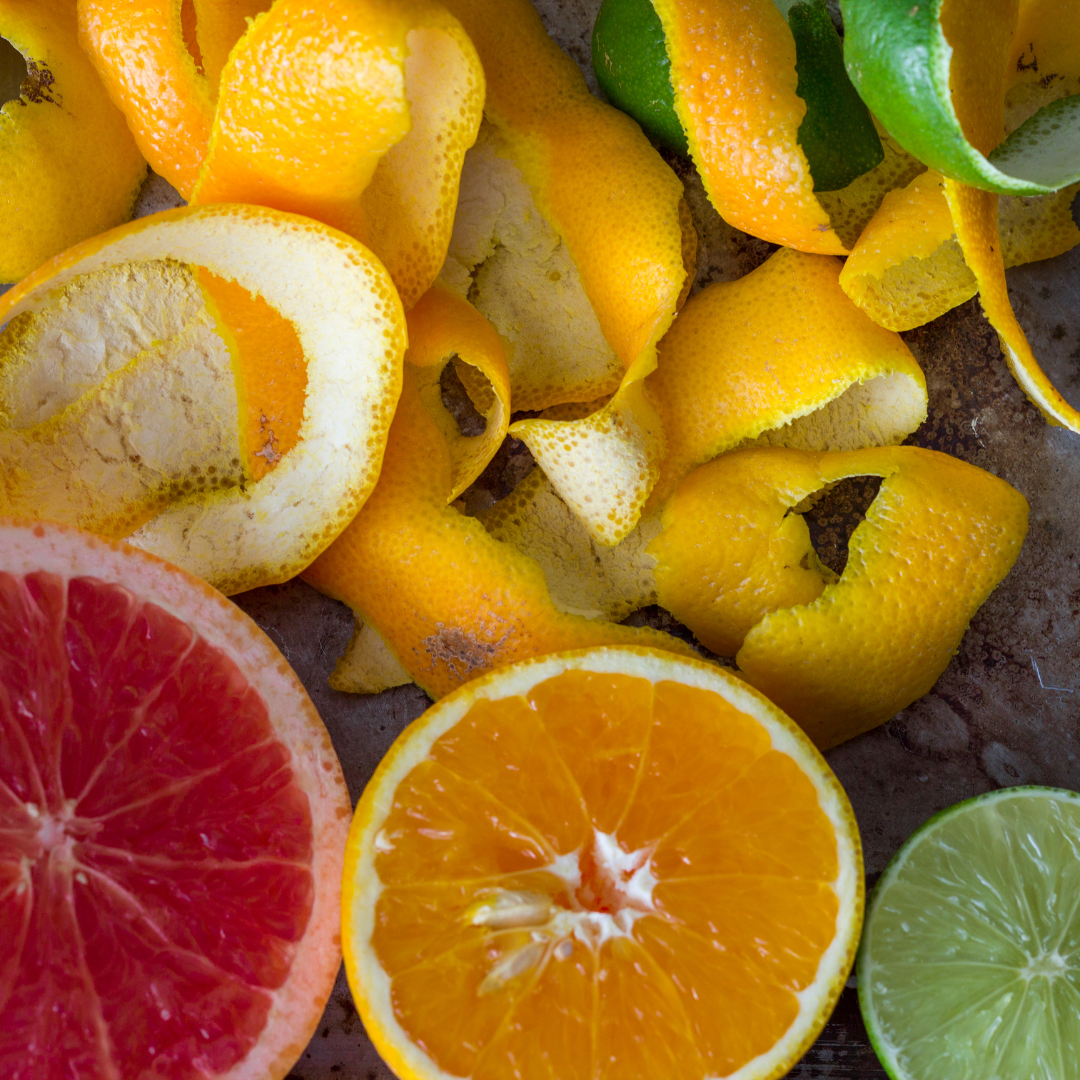More than just waste: The versatile use of citrus peels
Citrus fruits like oranges, lemons, limes, and grapefruits are not only delicious and healthy, but their peels contain valuable aromas and essential oils. Instead of throwing them away, they can be used in many areas of everyday life – from cooking to cleaning. In this article, you'll learn how to reuse citrus peels sustainably and creatively.

1. Culinary use
-
Aromatic spices: Dried and grated citrus peels are excellent for adding flavor to cakes, cookies, salads, and even savory dishes.
-
Homemade jam: Citrus peels contain pectin, which gives jams a natural gelling ability.
-
Lemon sugar or citrus salt: Mix dried peels with sugar or salt for a special flavor in drinks and dishes.
-

-
Flavored oils and vinegars: Add citrus peels to oil or vinegar to give them a fresh, fruity flavor.
-
Citrus tea: Dried citrus peels can be used as an aromatic ingredient in tea blends and have an invigorating effect.
2. Household helpers from nature
-
Natural cleaner: Soak citrus peels in vinegar to make an eco-friendly all-purpose cleaner.
-
Fresh room fragrances: Dried citrus peels in a bowl give off a pleasant scent or can be used in a homemade potpourri.
-
Limescale remover: Rub a lemon peel over limescale-covered faucets or kettles – the acid dissolves deposits.
3. Body care and wellness
-
Citrus scrub: Mix finely grated citrus peel with sugar and coconut oil for a natural body scrub.
-
Fragrant bath additives: Dried citrus peels in the bath water provide a refreshing and invigorating bathing experience.
-
Hair care: A rinse with lemon peel water gives the hair shine and freshness.
-
Lemon hand care: Lemon peels can help remove stains from hands after cutting fruit or vegetables.
4. Creative DIY ideas
-
Orange peel candle holder: Fill a hollowed-out orange peel with wax and add a wick – and you have a natural scented candle.
-
Decorative elements: Dried citrus peel pieces are suitable as sustainable decoration or craft material.
-
Moth protection: Dried citrus peels in a bag in the wardrobe keep moths away.
-
Gift ideas: Homemade citrus scrubs, scented pillows, or flavored salts are original and sustainable gifts.

5. Important information about eating citrus peels
-
Prefer organic: Conventional citrus fruits are often treated with pesticides, waxes, or preservatives. So, look for untreated or organic citrus fruits to avoid residues.
Our Quinta citrus fruits are safe to use, as the peels are untreated and preservative-free. The fruits are cultivated naturally and organically. -
Wash thoroughly: Even with organic fruit, you should thoroughly clean the peel with warm water and a brush before eating. Vinegar or baking soda solutions also help remove any residue.
-
Beware of bitterness: The white layer (albedo) between the flesh and the outer peel can taste bitter, especially in grapefruits and lemons. If you find the taste unpleasant, remove part of it.
-
Don't overdo it: Essential oils in the peel can be irritating to the stomach in large quantities. Use them sparingly, especially if you are sensitive to citrus fruits.
-
Allergies and intolerances: Some people are sensitive to citrus peels, especially to the essential oils or natural substances they contain, such as limonene. If you experience allergic reactions, you should limit consumption.
Conclusion: Citrus peels are far too good to be thrown away! With these simple tips, you can reuse them sensibly and live more sustainably at the same time. Whether in the kitchen, around the house, for personal care, or as natural decoration – the possibilities are almost endless. Give it a try and be inspired by the diverse possibilities!
Try great citrus fruits now!



